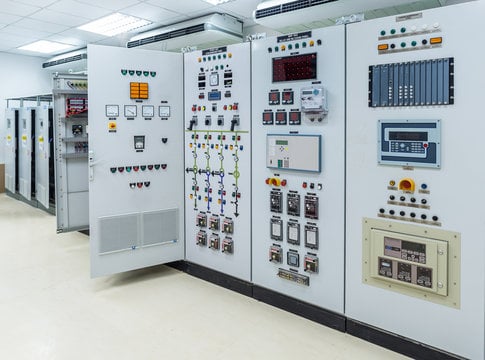When a gas is exposed to a voltage larger than its insulating capacity, electrical arcs can form. When the voltage is high enough to ionize the space between the conductors, an arc will form. The conductivity of ionized air is enhanced, allowing electricity to flow through it. Air ionization generates a current that produces heat and dazzling light. This phenomenon derives its name from the manner in which this heat causes ionized air to ascend and form an arch-shaped circulation. A potential arc flash temperature is 20,000 degrees Celsius.
Arc flash dangers endanger persons and property. Among the commercial consequences of arc in flash are:
- Direct expenses include worker compensation, medical care, rehabilitation, accident investigation, and productivity loss.
- Examples of indirect charges include costs related to litigation, fines, insurance premiums, repairs, and replacement personnel.
- Negative effects may harm your reputation, ability to compete for employment, and likelihood of facing criminal charges.
- Arc-related accidents Flash has the tendency to make a lasting impression, resulting in wasted chances and money.
Reasons of Arc Flash Hazard:
- Misuse of the test probe on the incorrect surface Inadequate installation, work procedures, and tool selection
- Use defective electrical components
- Equipment gaps or damage to the insulation
- Unplug any faulty panels.
- Dust or rust on electrical equipment
- Improper maintenance of the circuit breakers and switches
- Live components exposed or a frayed connection
- High-voltage wires or a steady source of electricity
- Moisture in electrical equipment
Methods for Minimizing Arc Flash Dangers:
Unplugging Electrical Components:
It minimizes potential dangers as much as is feasible. Work with extreme caution when testing or re-energizing de-energized equipment. Circuit breakers are kept away from arc flash boundaries that might threaten their users with the use of remote tracking technology.
Employ Low-Risk Technology:
Arc flash analysis and power system studies are conducted to determine the hazards associated with short circuits and the coordination of protective devices. Utilize low-threat options, such as remote rack equipment, to safeguard people and property.
Reconceptualize Electrical and Control Systems:
Ensure that PPE (personal protective equipment) is provided based on the arc flash hazard category. Modifications are being made to engineering tools and procedures to lessen hazards. Breakers and energy distribution systems are designed to limit incident energy.
Blast Energy Shift:
Encourage the use of arc-resistant materials. Arc flash energy and heat are directed via ducts by arc-resistant switchgear using sealed connections, pressure relief vents on the top, and strengthened hinges. Whole arc flash analyses are performed by CareLabs. Arc flash threats are evaluated by professionals to improve your safety program. CareLabs has access to the most recent arc flash risk reduction techniques.
CareLabs can do cutting-edge arc flash hazard prevention technology research and implementation. In CareLabs, ETAP (Electrical Transient Analysis Program) software is employed for research and analysis. To guarantee our knowledge is accessible in both normal and emergency situations, crew members are stationed in many places. We obtained ISO 9001:2008 certification and devoted customers rapidly. Vienna, Graz, Linz, Salzburg, and Innsbruck are cities in Austria.




